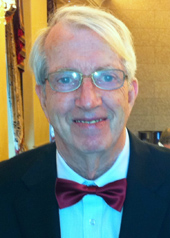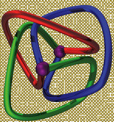|

Art, Architecture and Engineering at the Molecular Level
Members of our species, Homo sapiens sapiens, have been occupying regions of the earth for at least 60,000 years but it is only around 10,000 years ago that permanent structures began to be built - reflecting the predominantly nomadic life-style of our ancestors before this time. Monumental constructions in stone, typified by the pyramids and other great structures scattered throughout the Middle East, remain to remind us of the mind-shift that accompanied this change. Since then, art, architecture and engineering have all flourished on the human (or macro) scale, frequently driven by both challenge and creativity.
Dating from the beginnings of modern chemistry around two hundred years ago, when the nature of matter first begun to be understood in terms of atoms and molecules, it has been increasingly possible to undertake related creative activities at the molecular level - representing a further milestone in human history. This is especially true over the past three decades or so - reflecting the development of supramolecular chemistry, a sub-branch of chemistry that tends to mimic Nature's way of doing things. A focus of supramolecular chemistry is the use of single molecules and ions as 'building blocks' to construct larger assemblies exhibiting pre-designed shapes and properties. Using the tools of modern chemistry this is now often possible and supramolecular systems of significant subtlety, and also of very considerable aesthetic appeal, are being increasingly created on the nanometer scale. It is an area of contemporary chemistry where human creativity may be readily expressed.
A range of structures from the supramolecular realm that bridge the boundaries between art and science will be presented. These include examples displaying artistic nuances that mimic structures found in the macro world as well as interwoven (see illustration)(1) and other motifs showing both intricacy and beauty in their molecular forms.

(1) F. Li, J. K. Clegg, L. F. Lindoy, R. B. Macquart, G. V. Meehan. Nature Comm., 2011, 2:205.
Biographie
Leonard F. Lindoy is Emeritus Professor of Inorganic Chemistry at the University of Sydney and conjoint Professor at James Cook University in Queensland, working in the field of supramolecular chemistry and macrocyclic chemistry amongst others. He graduated from the University of New South Wales with a Ph.D. in 1968 and D.Sc. in 1985. In 1993 he was elected a Fellow of the Australian Academy of Science and a Senior Member of Robinson College, Cambridge. In 2006 he was appointed a Guest Professorship at East China University of Science and Technology (Shanghai) and awarded Honorary Professorships at Guizhou Normal University and Guizhou University (Guiyang, China). Lindoy received numerous awards such as the Leigthon Medal of the Royal Australian Chemical Institute in 2008 and the Centenary Prize of the Royal Society of Chemistry in 2009.
|

